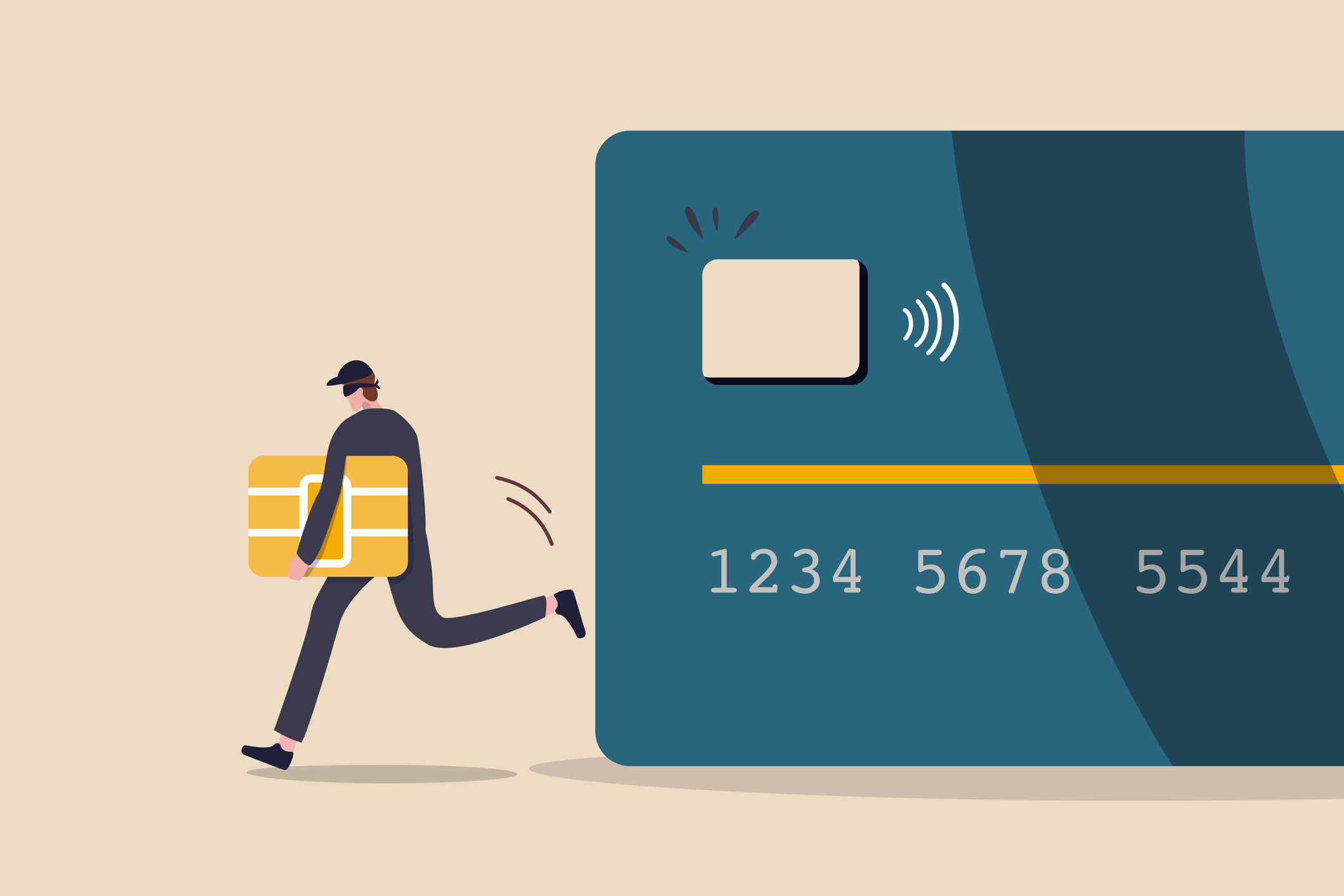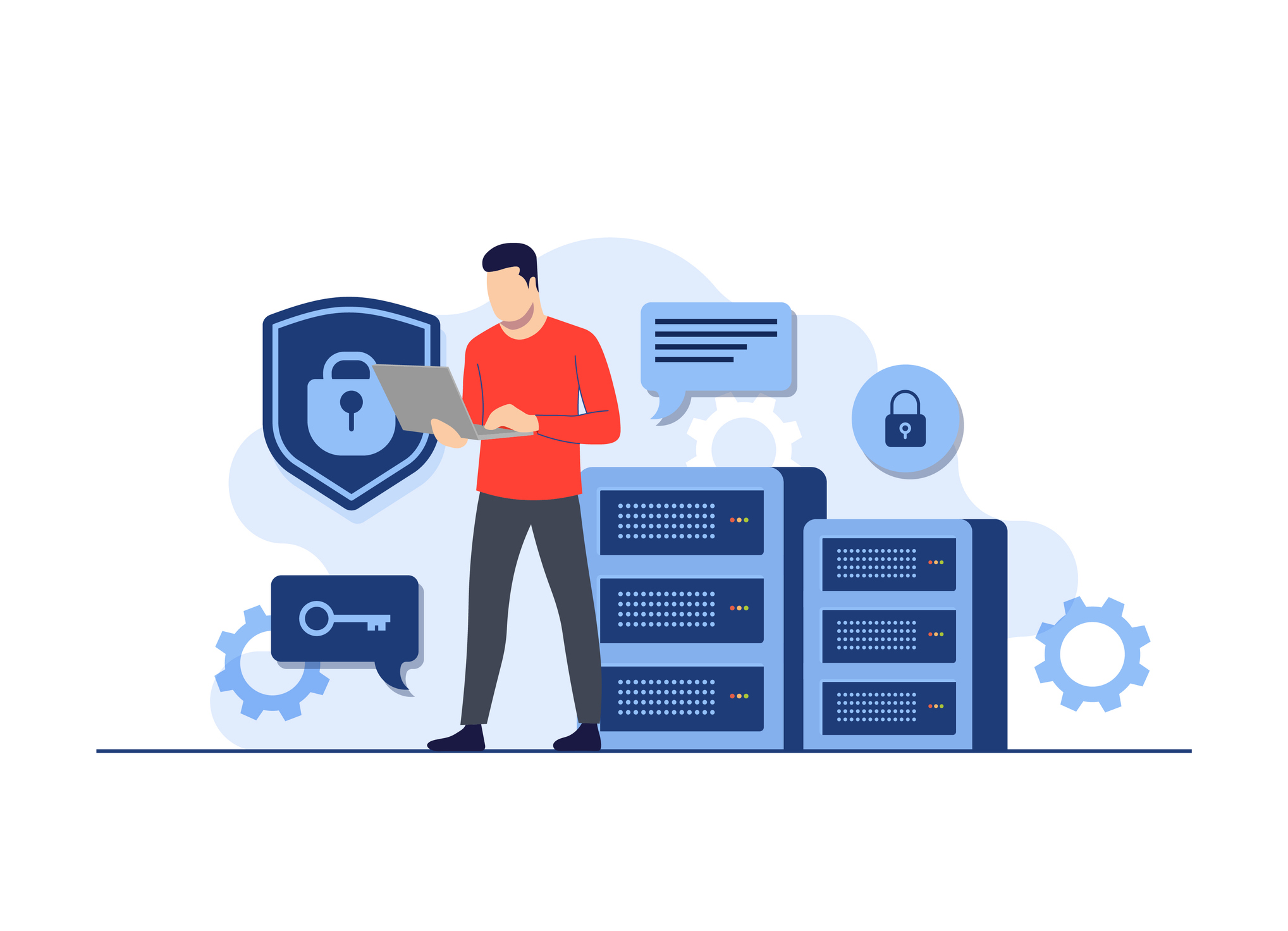7 Best Practices for Contact Center Data Security
by Kent Mao | Published On December 6, 2023 | Last Updated March 18, 2025

Cybersecurity is increasingly important in today’s digital age. Learn how to protect your customer data from cyberattacks.
As the technology within contact centers advances, so does the threat of cyberattacks.
Without the right security measures, contact centers could be at risk of data breaches and privacy violations. However, by implementing strict security protocols and following best practices, these risks can be mitigated.
This article will review the most common security issues that contact centers face as well as the best ways to address them.
Why are Contact Centers Targeted?
Contact centers are targeted by cybercriminals for several reasons. They often store a wealth of customer information, making them valuable targets for data theft and identity fraud.
This customer data can include names, addresses, phone numbers, and even credit card information. Outside of the private sector, government and healthcare contact centers often handle data that is even more sensitive, such as social security numbers and health records.
Contact centers also handle a high volume of interactions, presenting more opportunities for cybercriminals to exploit vulnerabilities in systems and gain unauthorized access. In the early days, contact centers were limited to just phone calls. But now, modern contact centers deal with customers across multiple channels, including phone, email, live chat and more.
Finally, the fast-paced nature of contact center operations may lead to lapses in security protocols or inadequate training for employees, making them more susceptible to cyberattacks.
What are the Risks and Vulnerabilities for Contact Centers?
Today’s contact centers run on complex software platforms with multiple features and integrations. This software and its underlying infrastructure may be vulnerable to cyberattacks for various reasons.
Outdated software: Software must be kept up to date in order to stay ahead of hackers. Outdated systems are low-hanging fruit for cybercriminals looking to exploit vulnerabilities. It is important to always update software to the latest versions and install patches, otherwise your business will be more vulnerable to cyberattacks.
Weak or broken access controls: Access controls, such as passwords, are essential to keeping sensitive data safe within contact centers. If these controls are weak or broken, they can easily be exploited by hackers. The most common reason for broken access controls are weak authentication or authorization mechanisms.
Payment card transactions: Whenever a customer provides their payment information to a merchant virtually, there is always a risk of the payment information being stolen and used fraudulently. Strong security protocols (such as PCI standards) are necessary for contact centers to process credit card payments safely.
Data storage: If data is not stored and protected properly, such as through encryption, it can lead to sensitive data being exposed through a data breach. Data must be protected both during transit and at rest. Proper storage of customer data is also essential for regulatory compliance.
Remote work infrastructure: The rise of remote work may have benefited many companies, but it has also introduced extra security concerns. For example, working on a public network and connecting to a company network without a VPN can put you at risk of a data breach. Because public Wi-Fi networks are unsecured and lack essential security measures, working from a coffee shop or public library can leave employees vulnerable to attack.
Common Security Threats for Contact Centers

Security threats for contact centers include various malicious activities that can compromise the confidentiality and integrity of sensitive information. Without robust security measures and continuous employee training, contact centers remain vulnerable to these threats.
Here are the most common ways that cybercriminals can attack a contact center:
- Data breaches: A data breach refers to the unauthorized access or disclosure of confidential information. Data breaches typically occur in contact centers when data is accessed by an unauthorized person and shared with a third party. If an unauthorized person gains access to contact center databases, it can lead to theft of personal or financial data.
- Phishing attacks: A phishing attack is a type of cyberattack where hackers use fake emails, text messages, or websites to trick individuals into revealing sensitive information like login details or customer information. These fraudulent communications often appear to come from legitimate sources, such as banks, government agencies, or reputable companies. They may contain urgent requests or enticing offers to prompt victims to respond quickly without thinking. Phishing attacks can also involve social engineering tactics, where attackers manipulate emotions or exploit trust to increase the likelihood of success.
- Ransomware: A ransomware attack involves hackers encrypting files or locking users out of their computer systems and demanding a "ransom" payment to restore access. This type of attack typically begins with the infiltration of a victim's computer through tactics like phishing emails, malicious attachments, or exploiting vulnerabilities in software. Once the ransomware gains access, it encrypts the victim's files, making them inaccessible. The attackers then demand payment in exchange for providing the decryption key and restoring access to the system.
Best Practices for Contact Center Data Security
There are many ways that businesses can protect their contact centers and keep their data secure. These methods span different functions of your business, from data encryption and access controls to background checks and business continuity plans.
By following best practices, you can increase data security within your contact center and, ultimately, prevent attacks from cybercriminals.
1. Multi-factor authentication and access controls
One of the most important methods of keeping data safe is the use of access controls. Access controls, such as passwords and login credentials, limit who can have access to certain types of data. While access controls are utilized by every business in some capacity, multi-factor authentication (MFA) provides enhanced security beyond your typical password. MFA requires employees to provide more than one piece of identity verification, such as a PIN, security token, or even facial recognition. Other best practices include regular reviews of access privileges as well as strict password requirements, such as monthly or yearly changes.
2. Data encryption
Another key element of contact center security is encryption. Encryption is a method of encoding data from a readable form into an unreadable form, which can only be decoded by someone with an encryption key. This method provides an extra layer of protection to sensitive data, keeping it safe both during transit and while being stored. Popular encryption methods include virtual private networks (VPN) and secure file transfer protocols (SFTP).
3. Cybersecurity training and background checks
When hiring new employees, it is important to properly vet and train them. Before bringing a new hire on board, a comprehensive background check should be completed. This helps to ensure you aren’t hiring someone with a criminal past and reduces the possibility of insider threats. Once hired, new employees should undergo cybersecurity training to help them identify and thwart common cyberattacks. Finally, existing employees should periodically undergo background checks to re-evaluate internal threat levels.
4. Secure data retention and disposal
Minimizing the length of time that data is retained and ensuring safe disposal is essential to safeguarding your contact center. Sensitive customer data should be stored for as short a time as possible, or just enough to fulfill the intended purpose. This reduces the risk of unauthorized access, data breaches or any other liabilities. When customer data is no longer needed, it should be disposed of using secure methods. For digital data, this could involve erasing hard drives and permanently deleting files. Physical data, such as paper copies, should be shredded and disposed of appropriately.
5. Endpoint security
Making sure the endpoints in your contact center are safe is another way to maintain data security. Endpoints in computer networks are end-user devices such as laptops, desktop computers and mobile devices. Any of these endpoints can be the entry point for a cyberattack, and the risk continues to increase as remote work gains in popularity. To maintain endpoint security, it is important to utilize antivirus software, thoroughly train employees, and implement continuous monitoring systems.
6. Incident response plans
Despite all the procedures and protocols used to thwart cyberattacks, security incidents still occur. In these situations, it is important to have an incident response plan in place to respond to these events, mitigate their impact and maintain critical business functions. The incident response plan should outline step-by-step procedures for different types of events. These procedures should cover communication protocols, personnel roles and responsibilities, containment measures and recovery strategies. Conducting simulations of security breaches as well as post-incident assessments following real-life events can help improve the success of your incident response plan.
7. Software updates and patches
Software updates and patches are periodically released to address security vulnerabilities. Installing these patches, along with regularly updating your software, is essential to keeping your contact center secure and safe from attacks. For a more streamlined process, organizations often turn to automated patch management, which makes the patching process automatic instead of manual.
Security Protocols for Contact Centers

Besides implementing best practices, security protocols play a major role in maintaining security and privacy of customer data. There are a few security protocols that are widely recognized in the contact center industry:
- Payment Card Industry Data Security Standard (PCI-DSS) – A global security standard for storing, handling, and transmitting credit card data.
- Service and Organization Controls (SOC 2) – An annual audit that reviews internal controls to determine how well an organization safeguards customer data.
- Microsoft Teams Certification – A three-tiered approach to security and compliance within Microsoft 365 applications.
To keep up to date on industry standards surrounding data security, businesses should implement these security protocols in their contact centers.
Another thing to keep in mind is that data security and privacy laws differ by jurisdiction. Jennifer Sutcliffe, Chief Security Officer of ComputerTalk, explains: “Different countries have different data confidentiality laws, so it is absolutely essential that organizations operating outside their own country know what they are and stay compliant.”
Tips for Safeguarding Your Contact Center's Data
Here are 7 practical tips for improving your contact center's data security that you can start implementing right away.
Employee Training
Employee training programs are the first line of defense against cyberattacks. Training programs are crucial to spreading security knowledge and awareness among employees. Ensure all staff understand the importance of protecting customer data and are equipped with the knowledge to identify and respond to security threats effectively.
Strengthen Authentication Protocols
Implement robust authentication measures, such as multi-factor authentication (MFA), to verify the identity of users accessing sensitive systems or data. This helps prevent unauthorized access and strengthens overall security for your contact center.
Encrypt Data in Transit and at Rest
Utilize encryption to safeguard customer data both during transmission and while stored within contact center databases. End-to-end encryption ensures that sensitive information remains protected from hackers or any other unauthorized access.
Regular Software Updates and Patch Management
Keep your contact center software and systems up to date with the latest security patches and updates. Regularly applying patches helps address known vulnerabilities and reduces the risk of exploitation by cybercriminals.
Access Control and Privilege Management
Implement strict access controls to limit employee access to sensitive data based on their roles and responsibilities. Regularly review and update user privileges to ensure that only authorized personnel can access critical systems and information.
Dispose of Data Securely
Establish clear protocols for the secure disposal of customer data, including shredding physical documents and permanently deleting digital records. Proper data disposal practices help prevent unauthorized access to sensitive information and mitigate the risk of data breaches.
Regular Security Audits and Risk Assessments
Conduct regular security audits and risk assessments to identify potential vulnerabilities and gaps in your contact center. Proactively addressing security risks helps mitigate internal and external threats and improves regulatory compliance.
Summary
In this day and age, maintaining security and privacy of customer data is critical to the success of any contact center. There are many protocols and procedures involved with data security, and warding off cybercriminals is a never-ending task.
However, by following best practices and implementing security protocols, businesses can defend their contact centers against external and internal threats, enhance the protection of customer data, and maintain trust and confidence in their services.
To learn more about safeguarding your contact center from potential threats, click here.
More from our blog
 My journey with ComputerTalk started in summer of 2017. I finished my last year of my Software Engineering degree from the University of Guelph in April and decided to take a well-deserved break after completing my degree.
My journey with ComputerTalk started in summer of 2017. I finished my last year of my Software Engineering degree from the University of Guelph in April and decided to take a well-deserved break after completing my degree.
 Like many university students, I am not 100% sure on the career path I want to take, but doing People Function Co-op at ComputerTalk has opened the door to a vast variety of possibilities that I did not even know...
Like many university students, I am not 100% sure on the career path I want to take, but doing People Function Co-op at ComputerTalk has opened the door to a vast variety of possibilities that I did not even know...
 Nobody likes waiting in a queue. Waiting in a call center queue can be just as frustrating as waiting in line at a store.
Nobody likes waiting in a queue. Waiting in a call center queue can be just as frustrating as waiting in line at a store.


